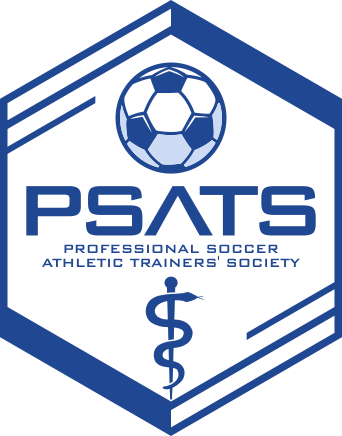By: Brian Betz and Juan Castano
Are they Ready? What’s the Risk?
As an ATC, one of the most fulfilling aspects of our job is watching and helping one of our athletes return from injury. Although returning an athlete from injury can look very different on a case-by-case basis, the end goal is always the same: return to competition. Once returned, our next goal and arguably one of the most important aspects of our job, is keeping that player fit and preventing any recurrence of injury. Throughout the injury and prevention process we must be cognizant of all the stakeholders involved and their different goals/wants. These goals and wants can vary, but ultimately boil down to player availability and the risk tolerance we all are comfortable assuming when it comes to player selection, whether it be in training or in match play. This poses the question of, “what can we do to lower the risk we assume?” An interesting conversation occurred between our staff this year in which we discussed what objective measurements could be used to best determine our recommendations for match minute restrictions/match availability. So how do we come up with that number?
Some loading guides already exist, such as the acute to chronic workload ratio.I Another study was able to create an injury prediction model in elite rugby league athletes that has a specificity of 98.8% and sensitivity of 87.1%.II While the research is minimal, there have been some interesting ideas that have shown a high level of promise. Most commonly, athletes who have decreased training loads are flagged for an increase in injury risk.III For athletes with a severely decreased training load such as those sidelined with an injury, it can be a slow process to return to pre-injury fitness if these guidelines were followed exactly. Our job then becomes focused around how we can use these guidelines to satisfy the goals of all stakeholders involved while preserving the athlete’s health. Given the research, there is some evidence that we can consider to help mold our decisions and recommendations when returning athletes to training and match fitness.
Some parameters we believe should guide our decision-making in the return-to-play process are as follows:
(This list is not comprehensive but a small sample of things to consider.)
- Individualization: The plan should be individualized based on the specific player’s injury, time lost, normative data, position, and situation.
- Volume : Some measure of volume should be considered to avoid the deleterious effects of over training (Rajkumar; Overtraining and Injury Prevention), or under loading (Ehrmann et al; 2016) which is already a predisposing factor for athletes returning from injury.
- Intensity: Higher intensity actions pose a greater risk in singular actions and can cause more fatigue. Gradually building intensity both in singular actions and across the overall session will decrease the risk of reinjury or a subsequent injury (Ehrmann et al; 2016).
- Periodization: there should be a clear, objective plan from the outset displaying how the athlete is going to get back to their preinjury level of fitness.
- Targets: Having target markers as a guideline that are individualized and fit in the periodization plan allow practitioners to make specific minute recommendations to stakeholders that are backed by objective evidence.
- Athlete’s Response: subjective information from the player is also critical to understanding if the plan needs to be altered.
Due to the multifactorial nature of the cause of injuries, no prediction model can be 100% accurate. A fully comprehensive model should consider all modifiable risk factors of injury risk. However, the more comprehensive a prediction model becomes, the more complex and therefore more difficult it is to implement and maintain. When formulating a return to competition guideline, the most important part is having one that is practical and implementable.
The medical team cannot fully prevent every subsequent injury from occurring, but we can reduce the risk. Working in conjunction with the performance staff to develop an injury prediction guide can help players stay healthy when reintegrating with the team. It also provides high quality information to shape our recommendations to all stakeholders involved, thus allowing us to make the best decision for the team and the player.
By:
Brian Betz DAT, ATC, CSCS
Assistant Athletic Trainer
Chicago Fire FC
bbetz@chicagofirefc.com
Juan Castano MS, ATC
Assistant Athletic Trainer
Chicago Fire FC
jcastano@chicagofirefc
References
I. Maupin, D., Schram, B., Canetti, E., & Orr, R. (2020). The relationship between acute: chronic workload ratios and injury risk in sports: a systematic review. Open access journal of sports medicine, 11, 51.
II. Gabbett, T. J. (2010). The development and application of an injury prediction model for noncontact, soft-tissue injuries in elite collision sport athletes. The Journal of Strength & Conditioning Research, 24(10), 2593-2603.
III. Ehrmann, F. E., Duncan, C. S., Sindhusake, D., Franzsen, W. N., & Greene, D. A. (2016). GPS and injury prevention in professional soccer. The Journal of Strength & Conditioning Research, 30(2), 360-367.




